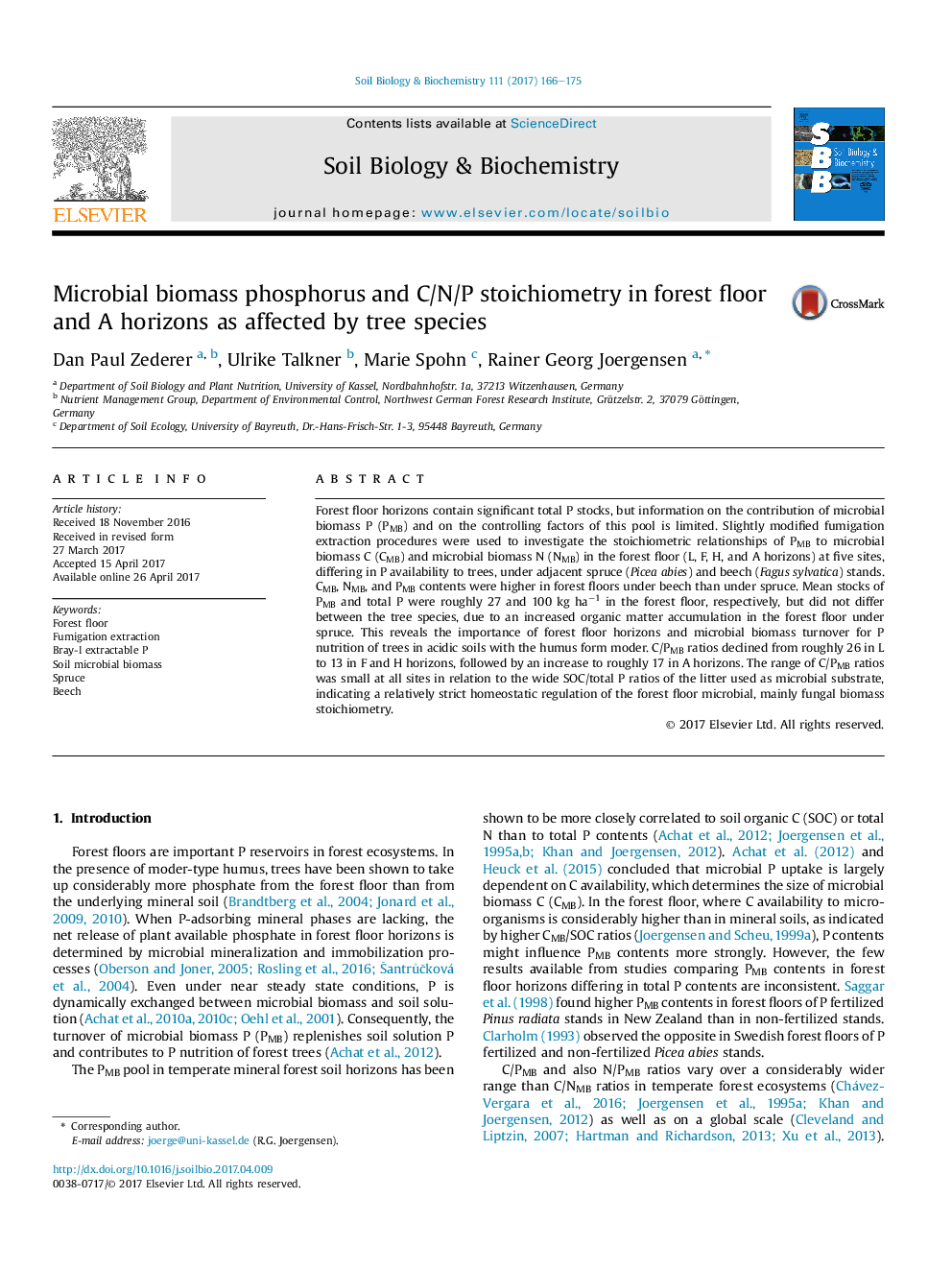| Article ID | Journal | Published Year | Pages | File Type |
|---|---|---|---|---|
| 5516297 | Soil Biology and Biochemistry | 2017 | 10 Pages |
â¢Forest floor microbial biomass C and P contents were higher under beech than under spruce.â¢Tree species did not affect microbial biomass C/P ratios.â¢Unlike the microbial biomass C/P ratios, SOC/total P ratios varied widely at all sites.â¢In L horizons, microbial biomass P was closely related to total P.â¢In F and H horizons, microbial biomass P was closely related to microbial biomass C and N.
Forest floor horizons contain significant total P stocks, but information on the contribution of microbial biomass P (PMB) and on the controlling factors of this pool is limited. Slightly modified fumigation extraction procedures were used to investigate the stoichiometric relationships of PMB to microbial biomass C (CMB) and microbial biomass N (NMB) in the forest floor (L, F, H, and A horizons) at five sites, differing in P availability to trees, under adjacent spruce (Picea abies) and beech (Fagus sylvatica) stands. CMB, NMB, and PMB contents were higher in forest floors under beech than under spruce. Mean stocks of PMB and total P were roughly 27 and 100 kg haâ1 in the forest floor, respectively, but did not differ between the tree species, due to an increased organic matter accumulation in the forest floor under spruce. This reveals the importance of forest floor horizons and microbial biomass turnover for P nutrition of trees in acidic soils with the humus form moder. C/PMB ratios declined from roughly 26 in L to 13 in F and H horizons, followed by an increase to roughly 17 in A horizons. The range of C/PMB ratios was small at all sites in relation to the wide SOC/total P ratios of the litter used as microbial substrate, indicating a relatively strict homeostatic regulation of the forest floor microbial, mainly fungal biomass stoichiometry.
